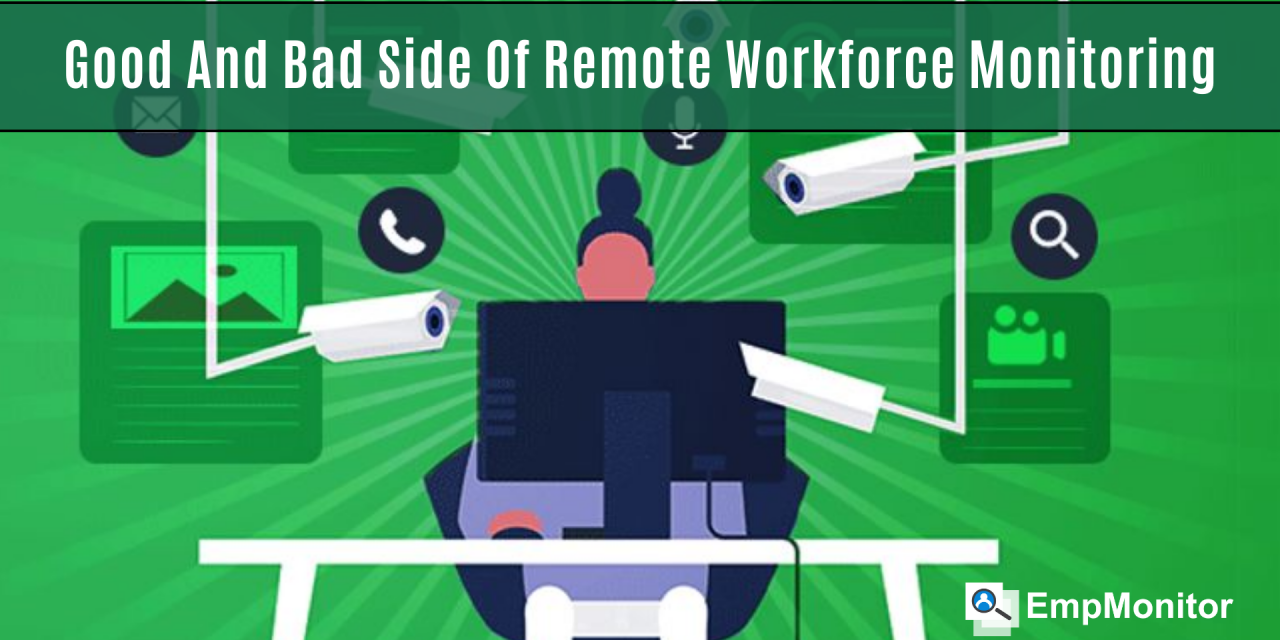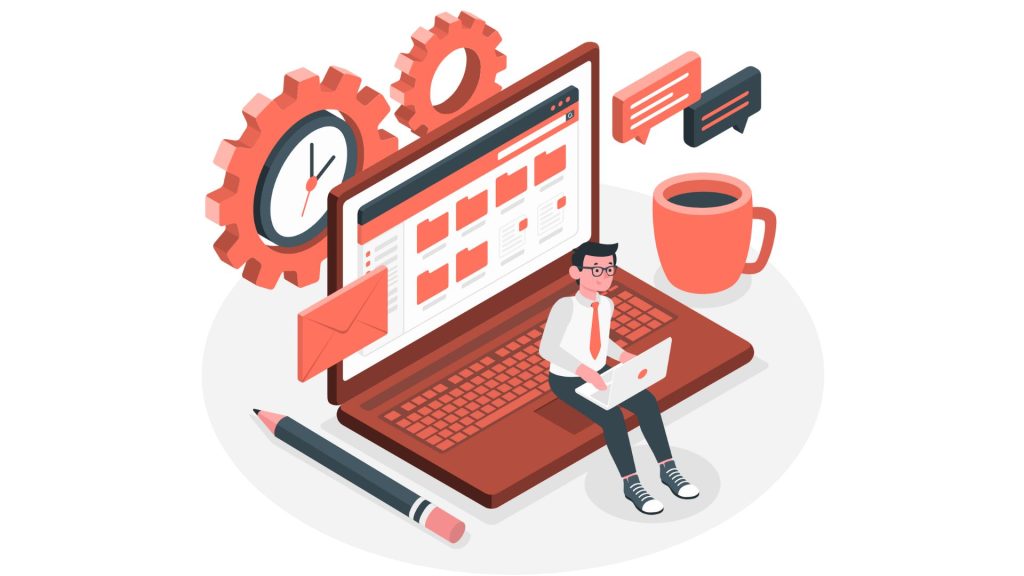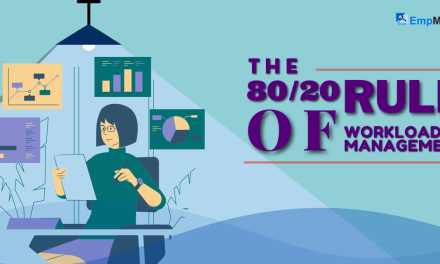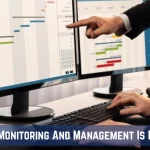Nowadays, many organizations are allowing their employees to work remotely. They are not afraid of remote work disruptions and the possibilities of cyber threats. Do you know the reason why? It is because of remote workforce monitoring software.
Through studies, we have found that remote workers can be more productive than usual office workers. It is also prone to cyber threats, and there can be issues with workforce efficiency as well. While to overcome this problem, many companies have implemented remote and hybrid employee monitoring solutions, and the results are also in their favor.
However, there have been some repercussions of using workforce monitoring reported. People can relate to privacy concerns after the execution of monitoring solutions in their firm. Also, depending on the company’s policy, you might want to know the ins and outs of employee monitoring before implementing any workforce surveillance system.
Tap on Play Button to Listen-
Types of Workforce Monitoring
Nowadays, advanced remote workforce management software has several features. Depending on your company’s requirements, you might have several expectations regarding the surveillance system you want to implement.
WorkTime Monitoring-
In the traditional workplace setting, organizations use a digital time clock to punch log in and out time. And there are also organizations keeping the work time record manually in a timesheet. However, by using remote employee monitoring software, you can easily track the work time of your remote-working employees.
Website Tracking-
With website tracking, employers can learn what their employees are doing online. It works for both remote workers and in-office workers. And using this tool, you can know whether your employers are really working or they might be checking social media or online shopping platforms.
Application Tracking-
Workforce monitoring also helps you learn about the most used applications in your workplace. Accordingly, you may categorize them as productive, neutral, or unproductive applications.
Social Media Tracking-
Some companies also keep track of their employees’ professional and personal social media profiles. It helps them know if their employees use social media during working hours. And that is because, in many organizations, employers have noticed that their employees use social media, which may disrupt productivity.
Email Tracking-
Another concern of employers could be because of emails exchanged by employees. It has been seen that emails can be the primary source of cyber threats, which may lead to data breaches. Organizations may deploy network security systems to avoid such issues. However, you can’t avoid this problem with a remote working setup. Employers can overcome this problem by applying email tracking on employees’ end. And make sure they don’t click on any of such spam phishing emails that can cause breaching.
Keylogger-
The keylogger tool tracks the strokes on the keyboard on the employee’s end so you can know what they are typing. It may help you to keep a record of employees’ work. So you can better analyze their work performances.
Video Surveillance-
Video surveillance works well in office workspace, where an employer can keep an eye on employees through several video cameras. But, in a remote work setup, you can’t install cameras in the remote employees’ workspace.
GPS tracking-
Field working employees may have to move from one place to another. In such a case, the employer can use GPS tracking to check their location and know whether they are on time for their job.
As you can see from the above employee monitoring solutions, some may fit well for your organization, and some may not. While opting for any surveillance tool, make sure to find the best-suited one for your firm.
Even after selecting the monitoring software, there are many other factors that you must consider. You may not want to attack employees’ privacy of your employees while monitoring their work activities.
Let’s check some of the other factors why almost every company is investing in a remote or hybrid workforce monitoring system. There are also some companies that are hesitant to monitor the activities of their remote-working employees. Here we will give you a glimpse of both the good and bad sides of remote employee monitoring.
Pros of Workforce Monitoring-
Definitely, as companies are implementing hybrid and remote work, employee monitoring has become a significant part of their work culture. And they found various benefits of monitoring their remote working employees.
Increase In Productivity-
Based on research, we have found that people tend to perform better when their activities are monitored by someone else. With the implementation of remote work culture, IT companies found that monitoring employees’ computer activities surely helps them increase productivity. A well-structured monitoring policy can also help employers motivate employees and bring their best potential to their work.
Enhance Team Performance-
Monitoring remote employees don’t only help you to check their individual productivity, but you can also learn about how well they work together as a team. That way, you can learn about their prowess and weaknesses, and accordingly, you may handle the task distribution process to bring out their potential as a team.
Cost Effective-
There are many workforce monitoring tools that you can choose for your business. You must opt for one of the best cost-effective employee monitoring software – EmpMonitor. It has real-time monitoring features that let you know when your employees are working or idling around. As we know, employee time theft is one of the main reasons why companies make losses. It’s because an employer has to pay for the work that’s not done. Due to act like buddy punching and timesheet manipulation, companies overpay their employees, which result in extra losses for the firm. However, using a monitoring solution, employers can keep track of their employees’ actual work time and make their payments accordingly.
Improve Security-
The most crucial thing about employee monitoring is that it helps you improve cybersecurity around your employees so that they won’t fall for any phishing traps. Since cybersecurity is one of the major threats to remote and hybrid work setups, many organizations are utilizing remote employee monitoring software to secure their business work.
Moreover, some employees are negligent about their work and may frequently commit mistakes. Employee monitoring can help you pinpoint such employees while you can punish them for their improper work behavior.
Cons of Workforce Monitoring-
With so many benefits, employers have also shown concern about a few shortcomings of employee monitoring mechanisms that may raise conflicts in your workforce. Here, let’s have a look at them all.
Micromanagement Causes Distrust-
While using remote workforce monitoring, there is a fine line that distinguishes management and micromanagement. Of course, you can’t expect all of your employees to give their 100%. And if you are too much considerate about their work behavior, it may cause distrust between employees. That’s why some employers are also quite hesitant to employ monitoring tools in their organization, as it may cause skepticism in employees’ minds.
However, we have also seen many organizations reasonably implementing employee monitoring (without micromanaging) to make employees more responsible for their work. This is why when it comes to remote work surveillance, micromanagement is one of the most debatable topics for employers.
Privacy Concerns-
There are also some ethical concerns about breaching the privacy concerns of employees. In the remote work setup, most employees use their own resources to do their job. While monitoring their work data, there are also chances of sneaking on their personal data, which employees may not want to disclose to their employers. For example, people might have their banking and credit card information on their devices. And it would be really unreasonable for employers/management to sneak such data.
Although we have seen that companies formed their own policies to regulate the employee monitoring process so that it doesn’t concern the privacy of any employee, for example, the employer can observe employees’ real-time work data during their working hour schedule. Unless suspicious activities got detected from the employees’ end, management doesn’t have the authority to inspect employees’ personal data.
Legal Implications-
Although remote employee monitoring is considered legal in most countries, there are rules protecting employees’ privacy. In some countries and states, there are legalities that may concern your remote employee monitoring policy. Of course, some information like private communication, medical records, and sensitive financial information should not be leaked. And while monitoring employees’ computer activities, if you fail to do so, it may cause legal issues for your business.
However, you can overcome most of these issues by regulating your employee monitoring policies in accordance so that they may not create any problems later. In short, remote workforce monitoring is totally safe, if you follow all the rules and privacy regulations to preserve employee security in your business.
EmpMonitor gets you the feature using which you can regulate your organization’s policies. It has an alert-based notification setting, which only triggers when it detects any suspicious activity from the employees’ end. If an employee is idle or offline for a time being or accessing an unproductive website, the employer gets an alert notification. Based on the severity of the incident, the employer may take further actions to avoid any further risks.
Conclusion-
In the end, if you ask whether remote workforce monitoring is good or bad. It depends on how well you plan to do it without concerning the privacy concerns of your employees. Otherwise, it is totally fine to monitor your remote and hybrid working employees.
Nowadays, when most employees are looking for more flexibility in their job. With employee monitoring, you can create a great option for them. And it also creates more opportunities for you as an employer to go beyond a certain region and hire top talents wherever you find them.
Also Read
Mobile Workforce Tracking: Best Productivity Management Solution 2023
Poor Employee Engagement? An Employee Monitor Software Can Do Wonders!













